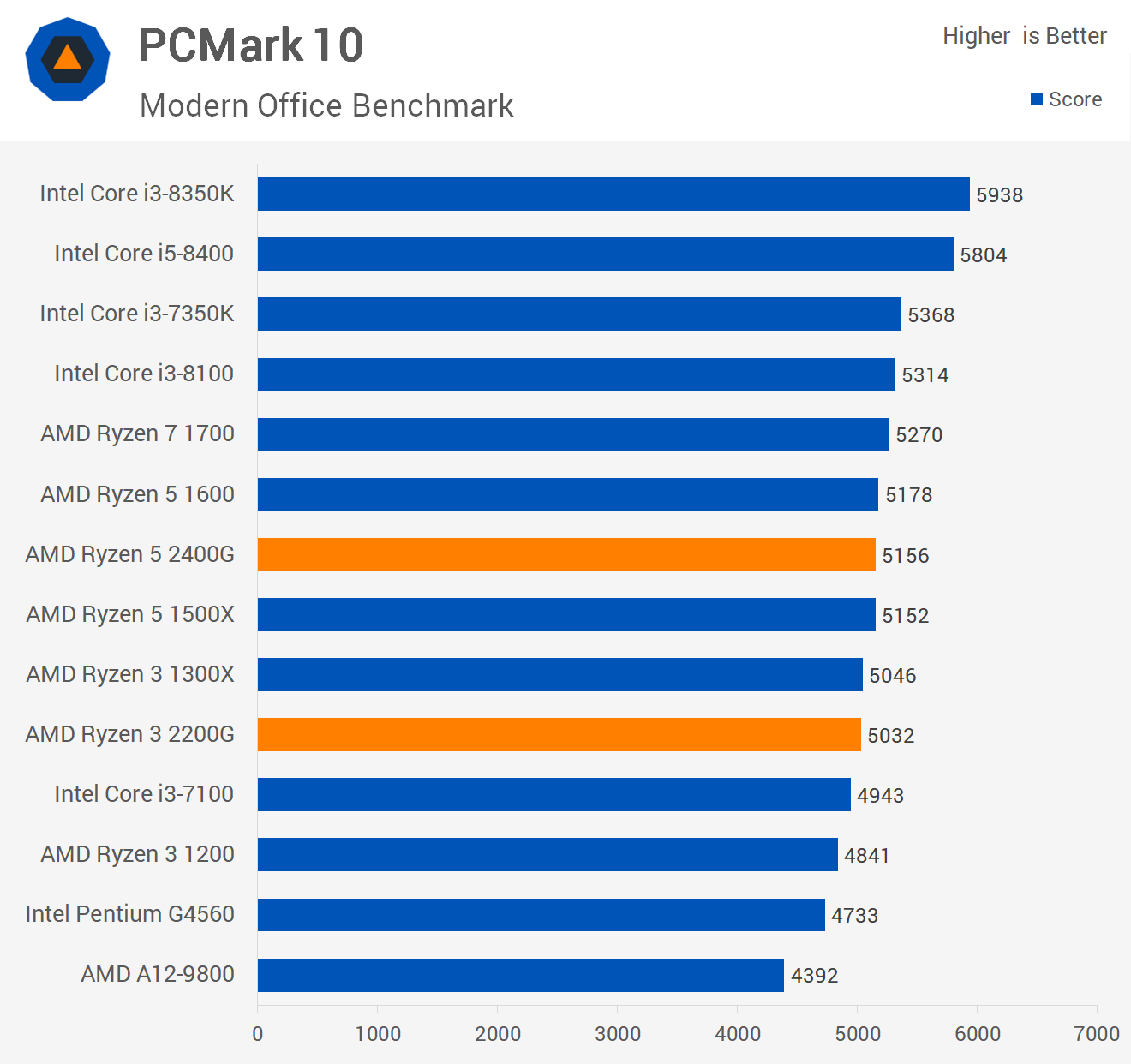Benchmarks: Memory & Synthetics

Starting with memory bandwidth performance we see that the 2400G and 2200G are very similar to the original Ryzen 3 and Ryzen 5, which was to be expected and should provide the integrated Vega GPU with enough bandwidth to deliver decent performance, but we'll look at that shortly.

Next up we have some Cinebench R15 results and here the new Raven Ridge APUs look very good, narrowly beating the X versions of their own product likes. In fact the 2400G was just 6% slower than the Core i5-8400 which is impressive, particularly given it can still be overclocked. Meanwhile 2200G was just edged out but the Core i3-8100.

The last synthetic benchmark we're going to look at is PCMark 10, which generally favors clock speed over core count as the applications it uses tend to only tap 2-4 threads. Performance-wise, the 2200G was a fraction slower than the 1300X while the 2400G basically matched the score of the 1500X. So this aligns with what we saw when testing with Cinebench R15.

Moving to the Excel Monte Carlo simulation, the 2400G is 16% slower than the 1500X, perhaps because of having less cache. Oddly, however, the 2200G was 7% faster than the 1300X, though of course the 1300X does have half the L3 cache of the 1500X. In any case, the Raven Ridge APUs provided strong performance in this test.
